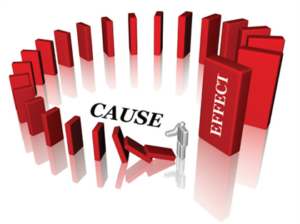This course teaches osteopaths how to regain the long lost ability to examine patients for a cause based diagnosis. Our patient’s symptoms are the end result of a cause and effect process, they are the effect and the expression of this process. There surely is a biomechanical disturbance with the tissues involved in the symptoms, there has to be. But why? What is disrupting the mechanics of these symptomatic tissues and making them function abnormally? There is always a reason. This is where the journey of examination for cause and effect begins.

Most osteopaths recognise that each patient who seeks their help seems to display a whole lesion pattern, from the TMJ to the big toe. This course teaches osteopaths how to interact with the patient’s neurology to ascertain which lesion in this whole pattern is a causal one and which lesion in secondary, a compensation. If the causal lesion is appropriately treated and resolved, the whole actively generated compensatory pattern shall undo in its entirety, without the need of direct treatment. The pattern resolves, the patient can then move through life freely, without the burdening energy of their given pattern. The next treatment session can focus on the next emerging pattern, and so on, freeing the patient's human potential and their ability to move, flow and adapt through their life.
 In the vast majority of cases, the symptomatic tissues are part of a total body compensatory pattern originating from a causal lesion. This course teaches osteopaths the evidence based and old school osteopathic testing methods to accurately diagnose what the causal lesion is, what it's compensatory biomechanical pattern is and how this may give rise to patient’s presenting symptoms. The end result is that the practitioner can achieve a resolution of their patient’s total lesion pattern, with each patient in every treatment session. Rather than offering the same treatment protocol session after session without achieving any long term shift in the patient's state of being.
In the vast majority of cases, the symptomatic tissues are part of a total body compensatory pattern originating from a causal lesion. This course teaches osteopaths the evidence based and old school osteopathic testing methods to accurately diagnose what the causal lesion is, what it's compensatory biomechanical pattern is and how this may give rise to patient’s presenting symptoms. The end result is that the practitioner can achieve a resolution of their patient’s total lesion pattern, with each patient in every treatment session. Rather than offering the same treatment protocol session after session without achieving any long term shift in the patient's state of being.
It is paramount to interact with the neurology as it is the most pertinent interface in the body, it relays all information between tissues. Wherever the causal lesion lies, it will be communicated via nerve pathways to the brain causing facilitated segments in the spine on it’s course, information is then processed and an appropriate response generated via the brain neural output creating the total body compensatory pattern. Tissues do not tighten for no reason, they only tighten when the nerve supplying them increases it’s neural load. It is a neural event.

As a simple example, if the forces involved in a lateral ankle sprain are so great as to be internally perceived to jeopradise survival of this given individual, then an appropriate neural response is generate and a causal lesion may be created at this ankle. The aim of which is to be stronger and better prepared if this ankle is to be subjected to similar forces again. It is a protective, survival and evolutionary based response. The innervation of the ankle structures involved being the L5 nerve (osteotome), the causal ankle lesion will generate an increase in neural load through the L5 nerve, generating a facilitated segment at L5-S1. This will cause all target tissues innervated by the L5 nerve to tighten. One of these tissues are the L5 bone and connected musculature, resulting in a flexion/extension rotation-side bending L5 lesion. This can indeed be associated with a low back pain presenting patient case.
Do we treat the L5 vertebrae or do we treat the ankle? If we treat the L5 then the ankle lesion will remain and the L5 lesion will soon return, together with the low back pain. If we treat and resolve the ankle lesion then the L5 nerve will return to healthy neural load and the L5 lesion will resolve. Furthermore, all the compensations further up from the L5 will also release, effortlessly.
 This example is simple but a common scenario seen in clinic. How can the practitioner be sure which tissues to treat? This is exactly what this course teaches, how to ascertain cause and effect, how to know what to treat and with which osteopathic technique, it in order to achieve a total resolution.
This example is simple but a common scenario seen in clinic. How can the practitioner be sure which tissues to treat? This is exactly what this course teaches, how to ascertain cause and effect, how to know what to treat and with which osteopathic technique, it in order to achieve a total resolution.
For all enquires, course details and admissions, please get in touch with us via the contact page.

